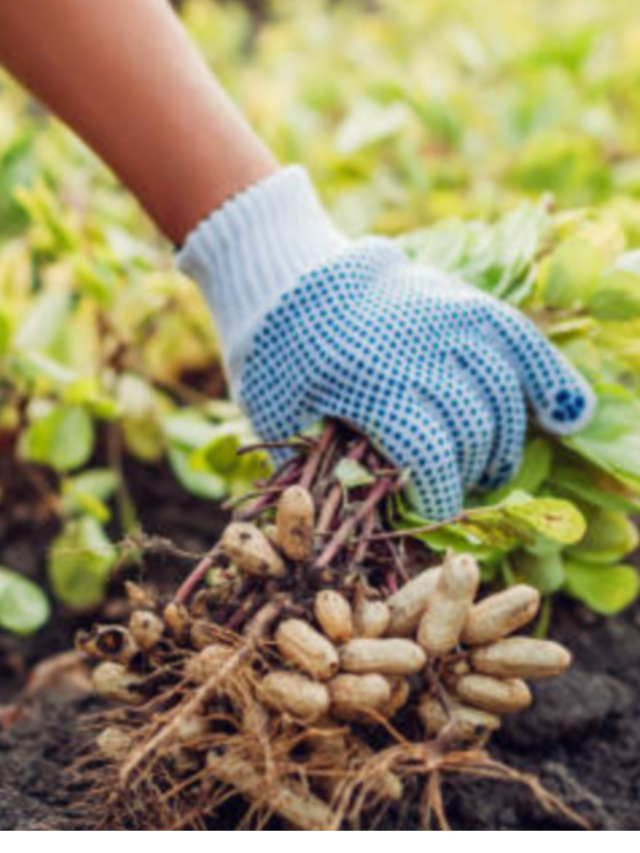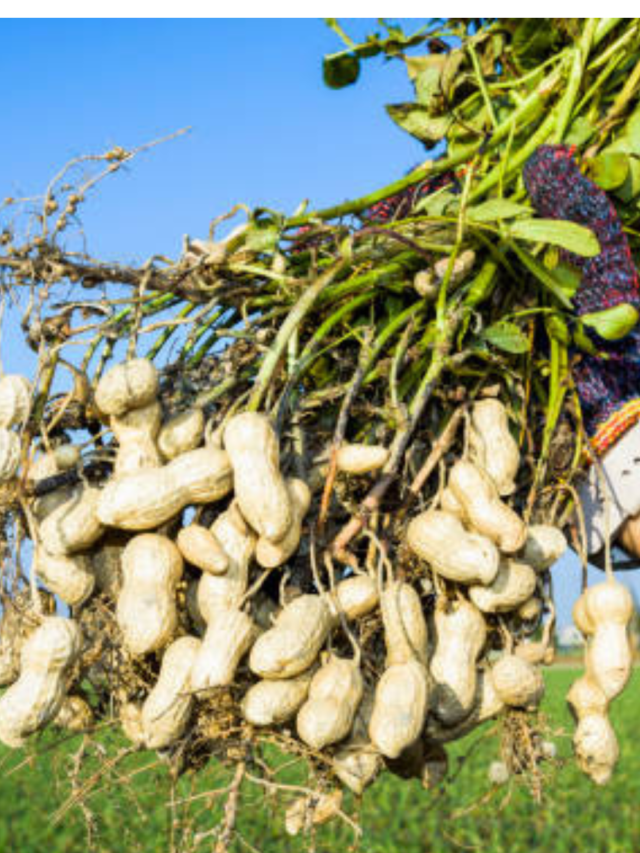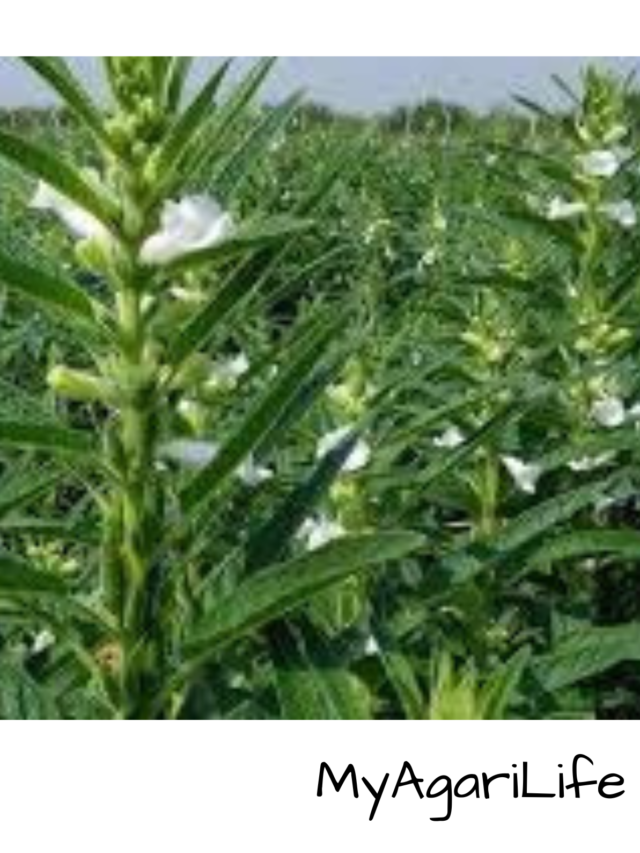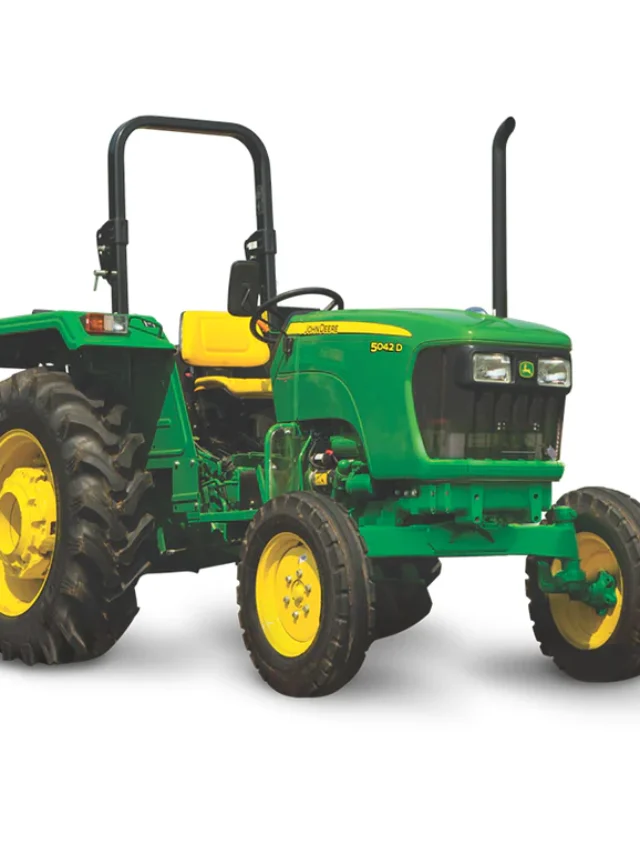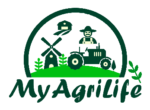Content of Table
1.Introduction to Smart Farming
2.IoT (Internet of Things) in Agriculture
3.Big Data Analytics in Agriculture
4.Artificial Intelligence (AI) in Agriculture
5.Robotics and Automation in Agriculture
6.Vertical Farming and Controlled Environment Agriculture
7.Blockchain in Agriculture
8.Benefits of Smart Farming Technologies
9.Challenges and Future Perspectives of Smart Farming
10.Case Studies and Success Stories
11.Conclusion
Introduction to Smart Farming
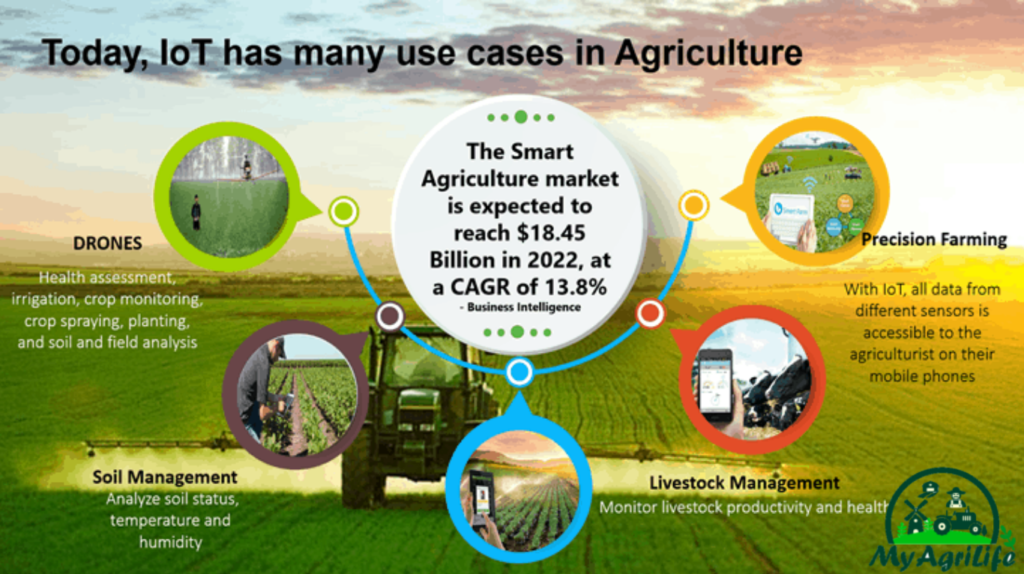
1. Definition and Overview
Smart Farming, also known as precision agriculture or digital farming, refers to the use of advanced technologies and data-driven approaches to optimize agricultural practices. It involves the integration of various technologies such as IoT, big data analytics, artificial intelligence, robotics, and automation into farming processes. The aim is to make farming more efficient, sustainable, and productive by leveraging real-time data and smart decision-making.
Smart Farming encompasses a wide range of applications, including crop management, livestock monitoring, irrigation control, pest and disease management, yield prediction, and more. By leveraging cutting-edge technologies and data-driven insights, farmers can make informed decisions, reduce resource wastage, improve yields, and enhance the overall profitability and sustainability of their operations.
2. Importance of Smart Farming in Agriculture
Smart Farming has become increasingly important in the agricultural industry due to several key factors:
1. Growing Global Population: With the world’s population projected to reach 9 billion by 2050, there is a pressing need to produce more food in a sustainable manner. Smart Farming technologies enable farmers to optimize production and maximize yields to meet the increasing demand for food.
2. Resource Scarcity and Climate Change: Agriculture faces challenges such as limited water availability, shrinking arable land, and unpredictable weather patterns due to climate change. Smart Farming offers solutions to conserve resources like water and energy, optimize fertilizer usage, and adapt farming practices to changing environmental conditions.
3. Labor Shortages: The agriculture sector often struggles with labor shortages, making it difficult to perform manual tasks efficiently. Automation and robotics technologies in smart farming can alleviate the labor burden by automating repetitive tasks, reducing the dependence on human labor, and improving operational efficiency.
4. Data-Driven Decision Making: The availability of real-time data from sensors, drones, satellites, and other sources allows farmers to make data-driven decisions. By monitoring crops, soil conditions, weather patterns, and other variables, farmers can optimize their farming practices, mitigate risks, and increase productivity.
5. Environmental Sustainability: Smart Farming promotes sustainable agricultural practices by minimizing the use of chemicals, reducing water and energy consumption, and adopting eco-friendly farming methods. This helps preserve natural resources, minimize environmental impact, and contribute to a more sustainable food production system.
In summary, Smart Farming plays a crucial role in addressing the challenges faced by modern agriculture. By leveraging technology and data-driven approaches, it offers opportunities to increase productivity, reduce environmental impact, and ensure food security for a growing global population.
IoT (Internet of Things) in Agriculture
1. Role of IoT in Smart Farming
The Internet of Things (IoT) plays a significant role in revolutionizing agriculture through smart farming practices. IoT refers to a network of interconnected devices embedded with sensors, software, and connectivity capabilities. In agriculture, IoT enables the collection, transmission, and analysis of real-time data from various sources, providing valuable insights for decision-making and automation.
IoT devices and sensors are deployed across farms to monitor and control different parameters such as soil moisture, temperature, humidity, light intensity, crop growth, livestock behavior, and more. These devices are interconnected through wireless networks, allowing seamless communication and data exchange between them and centralized systems.
2. Sensor Networks and Data Collection
Sensor networks form the backbone of IoT in agriculture. These networks consist of sensors and actuators strategically placed in fields, greenhouses, or animal facilities. They collect data on environmental conditions, crop growth, soil moisture, nutrient levels, and livestock behavior.
The sensors capture real-time data, which is transmitted wirelessly to a central system or cloud platform for analysis. The data collected helps farmers gain insights into the current state of their farms, enabling informed decision-making for efficient resource management, pest control, irrigation scheduling, and more.
3. Smart Irrigation Systems
One of the prominent applications of IoT in agriculture is the development of smart irrigation systems. These systems utilize sensor data to optimize water usage based on the actual needs of crops, ensuring efficient irrigation and minimizing water waste.
Soil moisture sensors placed at different depths in the fields provide real-time information about soil moisture levels. This data, combined with weather forecasts and crop requirements, enables the irrigation system to automatically adjust watering schedules, duration, and amounts. This precision irrigation approach helps farmers conserve water, improve crop health, and reduce energy costs associated with irrigation.
4. Precision Livestock Farming
IoT also brings advancements in livestock farming through precision livestock farming (PLF). PLF utilizes IoT devices to monitor and manage livestock health, welfare, and productivity.
Sensors are attached to animals to collect data on their location, activity levels, body temperature, heart rate, and feeding behavior. This data helps farmers identify early signs of illness, track animal movements, optimize feed distribution, and ensure optimal breeding conditions. By leveraging IoT in livestock farming, farmers can enhance animal welfare, reduce disease risks, and improve overall productivity.
The use of IoT in agriculture offers several benefits, including improved resource efficiency, optimized crop yields, reduced costs, and enhanced sustainability. With IoT-enabled smart farming, farmers can make data-driven decisions, automate processes, and implement precision techniques, ultimately leading to more efficient and productive agricultural practices.
Big Data Analytics in Agriculture
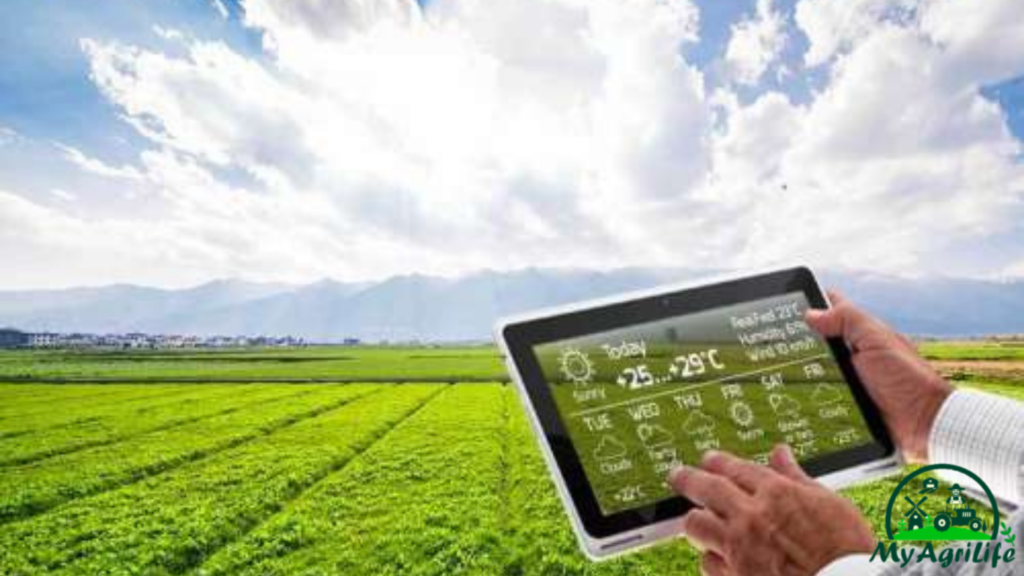
1. Data-driven Decision Making in Farming
Big data analytics plays a crucial role in transforming agriculture by enabling data-driven decision making. With the advent of IoT and sensor technologies, vast amounts of data can be collected from farms, including weather conditions, soil properties, crop growth, pest and disease prevalence, and more.
By applying advanced analytics techniques to this data, farmers can gain valuable insights and make informed decisions. They can identify patterns, correlations, and trends that may not be apparent through traditional observation methods. Data-driven decision making helps optimize farming practices, improve productivity, and mitigate risks.
2. Crop and Soil Monitoring
Big data analytics allows for detailed crop and soil monitoring, enabling farmers to optimize resource allocation and crop management. By analyzing data from sensors, satellites, drones, and other sources, farmers can assess crop health, growth rates, nutrient deficiencies, and irrigation needs.
Analytics algorithms can process this data to provide real-time recommendations for adjusting fertilizer application, irrigation schedules, and other agronomic practices. This precision approach helps maximize crop yields, minimize resource wastage, and ensure optimal plant health.
Additionally, big data analytics can facilitate soil mapping and analysis, providing insights into soil fertility, composition, and moisture content. This information enables farmers to tailor their soil management strategies, such as soil amendment applications and crop rotation plans, for optimal soil health and productivity.
3. Pest and Disease Management
Effective pest and disease management is critical for ensuring crop health and minimizing yield losses. Big data analytics aids in early detection, monitoring, and control of pests and diseases.
By analyzing historical and real-time data on pest populations, weather patterns, and crop conditions, predictive models can be developed to anticipate and identify potential pest outbreaks. This allows farmers to take proactive measures, such as targeted pesticide application, integrated pest management strategies, or the introduction of beneficial insects, to mitigate pest risks.
Similarly, big data analytics can assist in disease identification and management. By analyzing data on disease prevalence, environmental factors, and crop susceptibility, farmers can implement preventive measures, such as crop rotation, fungicide application, or resistant crop varieties, to reduce the impact of diseases and protect crop yields.
4. Yield Prediction and Optimization
Accurate yield prediction is essential for farmers to plan harvesting, storage, and marketing activities. Big data analytics leverages historical and real-time data on crop growth, weather conditions, soil quality, and other factors to develop yield prediction models.
By analyzing the data, these models can estimate crop yields at different stages of growth, allowing farmers to make informed decisions about resource allocation, harvest timing, and market planning. Yield optimization can also be achieved by identifying factors influencing yield variations and implementing targeted interventions to maximize productivity.
Moreover, big data analytics facilitates post-harvest analysis by integrating data on yield, quality parameters, market prices, and customer feedback. This information helps farmers identify areas for improvement, optimize storage and distribution strategies, and make better-informed decisions for future planting seasons.
In conclusion, big data analytics in agriculture empowers farmers with valuable insights for data-driven decision making. It enables precision monitoring, optimized resource management, effective pest and disease control, and accurate yield prediction. By harnessing the power of big data, farmers can enhance productivity, reduce risks, and contribute to a more sustainable and efficient agriculture industry.
Artificial Intelligence (AI) in Agriculture
1. Applications of AI in Farming
Artificial Intelligence (AI) has the potential to revolutionize agriculture by enabling advanced automation, data analysis, and decision-making capabilities. AI in agriculture encompasses various applications that leverage machine learning, computer vision, and predictive analytics to optimize farming operations.
AI is utilized in areas such as crop management, livestock monitoring, yield prediction, pest and disease detection, and farm robotics. By analyzing vast amounts of data, AI algorithms can extract meaningful insights, detect patterns, and make accurate predictions, helping farmers enhance productivity and efficiency.
2. Automated Farming Operations
AI-driven automation is transforming farming operations by reducing labor requirements, improving efficiency, and enabling precise execution of tasks. AI-powered robots and machinery can perform activities such as seeding, planting, weeding, and harvesting with precision and speed.
Computer vision and machine learning algorithms enable robots to recognize and differentiate between crops, weeds, and other objects in the field, allowing targeted actions. Automated systems can optimize resource allocation, minimize crop damage, and reduce the use of herbicides and pesticides, making farming more sustainable.
3. Crop Disease Identification and Diagnosis
AI technologies are used for accurate and rapid identification and diagnosis of crop diseases. Machine learning algorithms analyze images and sensor data collected from fields to detect signs of diseases, pests, or nutrient deficiencies.
AI-based disease identification models can compare image data against large databases of known diseases and symptoms, enabling early detection and timely intervention. This enables farmers to take appropriate measures, such as targeted treatments or crop management adjustments, to prevent the spread of diseases and minimize yield losses.
4. Predictive Analytics for Crop Management
AI-powered predictive analytics helps farmers make informed decisions by forecasting crop performance, weather conditions, and market trends. By analyzing historical data, weather patterns, soil characteristics, and other relevant factors, AI models can predict crop yields, optimal planting times, and potential risks.
This information assists farmers in optimizing planting schedules, resource allocation, and marketing strategies. Predictive analytics also aids in determining the most effective crop varieties, irrigation plans, and fertilizer applications for specific conditions, enhancing overall farm productivity and profitability.
Moreover, AI-driven systems can provide real-time recommendations and alerts to farmers, guiding them on irrigation scheduling, pest control, and disease management based on the continuously evolving data inputs.
AI’s capabilities in agriculture extend beyond the applications mentioned above. Its potential includes farm robotics, automated quality control, supply chain optimization, and smart forecasting systems. The integration of AI technologies into agriculture holds significant promise for sustainable farming practices, increased productivity, and improved decision-making processes.
Robotics and Automation in Agriculture
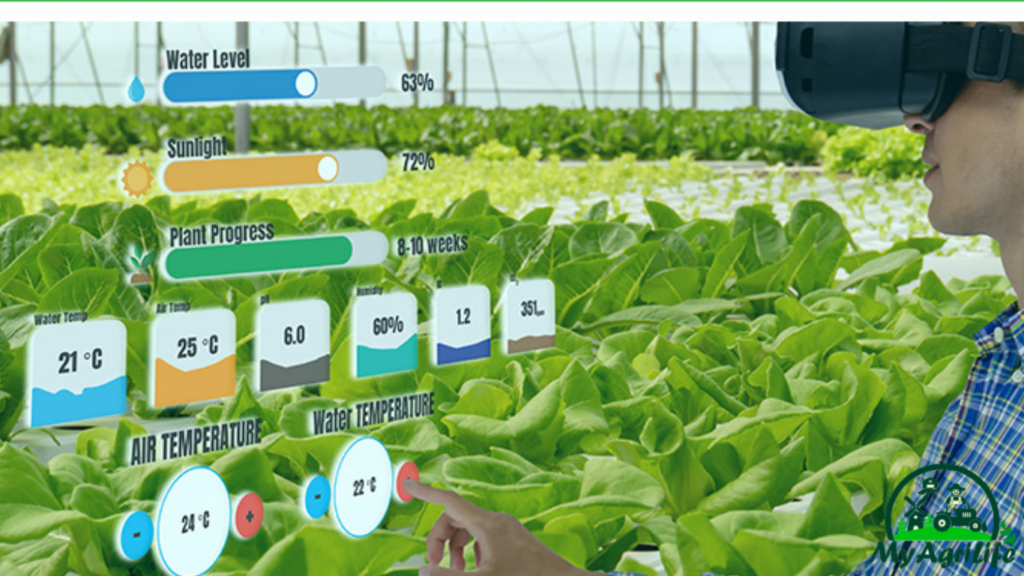
1. Farm Automation Technologies
Robotics and automation technologies are transforming agriculture by replacing manual labor, increasing efficiency, and enabling precision farming. Various automation technologies are being employed in different aspects of agriculture, revolutionizing farming practices.
Automated systems for planting, irrigation, fertilization, and harvesting automate repetitive tasks, leading to increased productivity and reduced labor costs. These technologies utilize sensors, actuators, and advanced control systems to perform tasks with precision, minimizing resource wastage and optimizing crop growth.
2. Agricultural Drones and UAVs (Unmanned Aerial Vehicles)
Agricultural drones and UAVs have gained significant popularity in recent years due to their ability to capture aerial imagery and collect data for agricultural purposes. Equipped with cameras, multispectral sensors, and other specialized devices, drones can monitor crops, assess plant health, and detect anomalies in fields.
The captured data is processed using computer vision and machine learning techniques, providing valuable insights on crop growth, nutrient deficiencies, irrigation needs, and pest infestations. This data helps farmers make informed decisions, target interventions, and optimize resource allocation. Drones are also used for precision spraying, enabling targeted application of pesticides and fertilizers, reducing chemical usage and environmental impact.
3. Autonomous Farm Vehicles and Machinery
Autonomous farm vehicles and machinery are transforming traditional farming practices by automating tasks such as plowing, planting, and harvesting. These vehicles utilize GPS, sensors, and advanced control systems to navigate fields, perform tasks with precision, and optimize operations.
Autonomous tractors, for instance, can follow predetermined routes and adjust their actions based on real-time data and field conditions. This reduces human labor, increases operational efficiency, and enables consistent and precise execution of tasks. Autonomous machinery helps farmers save time, reduce costs, and improve overall productivity.
4. Robotic Harvesting Systems
Robotic harvesting systems are designed to automate the labor-intensive process of crop harvesting. These robots use computer vision and robotic arms to identify, pick, and sort ripe fruits or vegetables.
By employing machine learning algorithms, these robots can differentiate between ripe and unripe produce, ensuring selective harvesting. Robotic harvesting systems enhance efficiency, reduce labor costs, and minimize damage to crops. They also address labor shortages in harvesting, as they can operate continuously without fatigue or physical limitations.
Additionally, robots can be equipped with sensors to monitor crop quality parameters such as size, color, and ripeness. This data aids in optimizing post-harvest processes, such as sorting, grading, and packaging, ensuring better quality produce and reducing waste.
In summary, robotics and automation technologies are revolutionizing agriculture by improving efficiency, precision, and productivity. From drones and autonomous vehicles to robotic harvesting systems, these technologies enable farmers to streamline operations, optimize resource utilization, and achieve sustainable farming practices.
Vertical Farming and Controlled Environment Agriculture
1. Introduction to Vertical Farming
Vertical farming is a method of agriculture that involves cultivating crops in vertically stacked layers or shelves, often in controlled environments such as indoor facilities or vertical structures. This approach utilizes techniques like hydroponics, aeroponics, or aquaponics to grow plants without soil, providing an alternative solution to traditional farming methods.
Vertical farming maximizes the use of limited space by stacking multiple layers vertically, allowing for higher crop yields in smaller footprints. It also enables year-round cultivation independent of climate conditions and can be implemented in urban areas, bringing food production closer to consumers.
2. Benefits of Vertical Farming
Vertical farming offers several benefits:
1. Increased Crop Yields: By utilizing vertical space, vertical farms can achieve higher crop yields per square foot compared to traditional farms. This is achieved through optimized lighting, nutrient delivery, and precise environmental control, resulting in faster plant growth and more harvest cycles per year.
2. Efficient Resource Utilization: Vertical farming minimizes water usage by recycling and recirculating irrigation systems. Additionally, it reduces the need for pesticides and herbicides and allows precise nutrient delivery to plants, optimizing resource utilization.
3. Climate Independence: Vertical farms operate in controlled environments, allowing for cultivation throughout the year regardless of external weather conditions. This reduces the risk of crop loss due to extreme temperatures, droughts, or pests.
4. Reduced Environmental Impact: Vertical farming reduces the need for extensive land use, mitigates soil erosion and degradation, and minimizes transportation distances, leading to a lower carbon footprint. It also eliminates the runoff of fertilizers and pesticides into natural ecosystems.
5. Local and Urban Food Production: Vertical farming can be implemented in urban areas, bringing food production closer to consumers. This reduces the time and resources required for transportation and ensures fresher produce with shorter supply chains.
3. Components of Vertical Farms
Vertical farms typically consist of the following components:
1. Growing Systems: Vertical farms utilize various soilless growing techniques such as hydroponics (plants grown in water with added nutrients), aeroponics (plants grown in a mist environment), or aquaponics (integration of fish farming and hydroponics). These systems provide plants with necessary nutrients and water in a controlled manner.
2. Artificial Lighting: Since natural sunlight may be limited in indoor environments, artificial lighting plays a crucial role in vertical farms. LED lights are commonly used as they provide specific light spectra to optimize plant growth, allowing farmers to tailor lighting conditions for different plant varieties.
3. Climate Control: Vertical farms require precise control over temperature, humidity, and airflow to create optimal growing conditions for plants. HVAC (heating, ventilation, and air conditioning) systems are employed to maintain the desired climate parameters.
4. Automation and Monitoring: Vertical farms often incorporate automation and monitoring systems to control and monitor various parameters. This includes automated nutrient delivery, irrigation systems, and sensors that measure environmental factors like temperature, humidity, pH levels, and nutrient concentrations.
4. Controlled Environment Agriculture (CEA)
Controlled Environment Agriculture (CEA) is a broader term that encompasses vertical farming and other methods of agriculture in controlled environments. CEA refers to the practice of growing crops in environmentally controlled structures, such as greenhouses or indoor facilities, where various parameters like light, temperature, humidity, and CO2 levels are regulated.
CEA allows farmers to create optimal conditions for crop growth, enabling year-round cultivation and precise control over plant health and productivity. It offers similar benefits as vertical farming, including increased yields,
Blockchain in Agriculture
1. Introduction to Blockchain Technology
Blockchain is a decentralized and distributed digital ledger technology that records transactions and data across multiple computers or nodes. It provides transparency, security, and immutability by creating a tamper-resistant chain of data blocks.
2. Benefits of Blockchain in Agriculture
Blockchain technology offers several benefits in the agricultural industry:
1. Transparency: Blockchain provides transparency and visibility throughout the supply chain by recording and verifying transactions and data. It enables all participants, including farmers, suppliers, distributors, and consumers, to access and verify information, enhancing trust and accountability.
2. Security: Blockchain’s cryptographic and decentralized nature ensures secure storage and sharing of data. Transactions and records stored on the blockchain are tamper-resistant, reducing the risk of fraud, counterfeiting, and data manipulation.
3 Traceability: Blockchain enables end-to-end traceability of agricultural products from farm to fork. Each transaction and movement in the supply chain is recorded on the blockchain, allowing consumers and stakeholders to track the origin, production practices, and handling of the products.
4. Efficiency and Cost Savings: By eliminating intermediaries and automating processes, blockchain can streamline supply chain operations, reducing paperwork, manual data entry, and administrative costs. It also enables faster and more accurate data sharing and reduces the time required for dispute resolution.
5. Trust and Reputation: Blockchain-based systems can enhance trust and reputation in the agricultural industry. Verified data on the blockchain, such as certifications, production practices, and quality standards, can differentiate products and brands, allowing consumers to make informed choices.
3. Traceability and Supply Chain Management
Blockchain technology enables robust traceability and supply chain management in agriculture. Each transaction, from the production stage to distribution and retail, is recorded on the blockchain, creating an immutable record of the product’s journey.
This traceability helps identify the origin of ingredients or raw materials, track product handling and storage conditions, and verify certifications or quality standards. In case of food safety issues or recalls, blockchain allows for swift identification of affected products, minimizing the impact on consumers and providing targeted recalls.
4. Quality Assurance and Food Safety
Blockchain can enhance quality assurance and food safety in agriculture by providing a transparent and immutable record of product information. Smart contracts and IoT devices can monitor and record data on factors such as temperature, humidity, and handling practices during transportation and storage.
This data is stored on the blockchain, ensuring its integrity and accessibility. If quality or safety thresholds are breached, the blockchain can trigger alerts and notifications, enabling quick actions to address the issue and prevent the distribution of compromised products.
5. Smart Contracts and Payment Systems
Blockchain’s smart contract functionality allows for automated and secure execution of contracts between different parties in the agricultural supply chain. Smart contracts can facilitate automated payment systems, ensuring timely and transparent transactions based on predefined conditions.
For example, farmers can receive immediate payment upon delivery of their produce, eliminating delays and reducing the risk of non-payment. This enhances financial inclusion, particularly for small-scale farmers who may face challenges accessing traditional banking systems.
In conclusion, blockchain technology brings transparency, security, and efficiency to the agricultural industry. It enables traceability, supply chain management, quality assurance, and streamlined payment systems. By leveraging blockchain, the agriculture sector can improve trust, enhance food safety, and create a more sustainable and resilient supply chain ecosystem.
Benefits of Smart Farming Technologies
The benefits of smart farming technologies are numerous and can have a significant positive impact on agriculture. Here are some key benefits:
1.Increased Efficiency: Smart farming technologies optimize resource utilization, including water, fertilizers, and energy. Sensors, automation, and data analytics enable precise control and monitoring of inputs, resulting in more efficient use and reduced waste.
2.Improved Crop Yield and Quality: Smart farming technologies provide real-time monitoring of crop health, enabling early detection of issues such as nutrient deficiencies, pests, diseases, or adverse weather conditions. Timely interventions and targeted treatments help maintain crop health, resulting in higher yields and better quality produce.
3.Sustainable Practices: By optimizing resource usage, smart farming technologies promote sustainability in agriculture. Precision irrigation reduces water consumption, targeted application of fertilizers minimizes environmental impact, and advanced pest management techniques decrease reliance on chemical pesticides. These practices contribute to environmental preservation and conservation.
4.Data-Driven Decision Making: Smart farming technologies generate vast amounts of data through sensors, drones, and other devices. Data analytics and machine learning algorithms process this information to provide valuable insights and recommendations for farmers. Data-driven decision making allows for optimized planting, improved crop management strategies, and efficient allocation of resources.
5.Labor and Time Savings: Automation and robotics in smart farming reduce manual labor requirements and streamline repetitive tasks. This frees up farmers’ time, allowing them to focus on more strategic and value-added activities. Autonomous vehicles, robotic systems, and automated machinery contribute to labor and time savings in various farming operations.
6.Weather Monitoring and Predictive Analytics: Smart farming technologies integrate weather monitoring systems to provide real-time weather data and forecasts. Farmers can plan their operations accordingly, optimizing planting schedules, irrigation, and harvesting. Predictive analytics models leverage historical and real-time data to provide insights on crop growth, yield projections, and market trends, aiding in informed decision making.
7.Enhanced Food Safety and Traceability: Smart farming technologies enable traceability throughout the supply chain, from farm to table. Through blockchain, RFID tags, or other tracking systems, consumers and stakeholders can verify the origin, production practices, and handling of agricultural products. This promotes food safety, reduces the risk of fraud or counterfeit products, and enhances consumer confidence.
8.Remote Monitoring and Control: With smart farming technologies, farmers can remotely monitor and control farming operations. IoT-enabled devices and mobile applications provide real-time access to data, allowing farmers to monitor crops, adjust environmental conditions, and receive alerts or notifications. Remote monitoring improves operational efficiency and enables proactive management, even when farmers are not physically present on the farm.
9.Scalability and Adaptability: Smart farming technologies can be implemented in various scales, from small-scale farms to large commercial operations. These technologies are adaptable to different crop types, farming methods, and geographical locations. Farmers can adopt and scale up smart farming practices based on their specific needs and requirements.
Overall, smart farming technologies offer significant benefits such as increased efficiency, improved yields and quality, sustainability, data-driven decision making, labor savings, enhanced traceability, and remote monitoring and control. These advancements contribute to the transformation of agriculture, making it more productive, sustainable, and resilient in the face of challenges and changing agricultural landscapes.
Challenges and Future Perspectives of Smart Farming
Challenges:
1.High Initial Investment: Implementing smart farming technologies often requires significant upfront investment in infrastructure, equipment, and training. This can be a barrier for small-scale farmers or those with limited financial resources.
2.Technical Expertise and Training: Smart farming technologies involve complex systems, data analytics, and automation. Farmers need access to training and technical support to effectively operate and manage these technologies. Lack of expertise and training can hinder adoption and utilization.
3.Data Management and Privacy: Smart farming generates large amounts of data from various sources. Proper data management, including storage, analysis, and security, is crucial. Farmers must address concerns related to data ownership, privacy, and sharing agreements to ensure trust and compliance.
4.Connectivity and Infrastructure: Smart farming relies on robust internet connectivity and infrastructure, especially in remote or rural areas. Limited access to reliable internet connectivity can hinder the seamless integration and functioning of smart farming technologies.
5.Standardization and Interoperability: The agricultural industry lacks consistent standards and interoperability among different smart farming technologies and platforms. This can pose challenges in data exchange, integration, and compatibility between various systems, limiting the full potential of smart farming.
6.Adoption and Awareness: Encouraging widespread adoption of smart farming technologies requires awareness, education, and support from stakeholders, including farmers, policymakers, and industry players. Promoting the benefits and addressing concerns can facilitate greater acceptance and adoption of these technologies.
Future Perspectives:
1.Integration of Artificial Intelligence (AI) and Machine Learning (ML): AI and ML algorithms will play a crucial role in smart farming, enabling more advanced data analysis, predictive modeling, and decision support systems. These technologies will enhance automation, optimize resource allocation, and enable real-time monitoring and control.
2.Edge Computing and IoT Advancements: Edge computing, where data processing occurs closer to the source, and advancements in the Internet of Things (IoT) will enable faster and more efficient data collection, processing, and decision making in smart farming. This will reduce reliance on cloud computing and enhance real-time responsiveness.
3.Robotics and Automation: Robotics and automation will continue to evolve, enabling more sophisticated and autonomous systems for various farming operations. Advancements in robotic platforms, machine vision, and manipulation capabilities will lead to more efficient and precise tasks such as seeding, weeding, and harvesting.
4.Blockchain for Supply Chain Transparency: Blockchain technology will gain further prominence in ensuring traceability, transparency, and trust in the agricultural supply chain. It will provide immutable records of transactions, certifications, and quality parameters, enhancing food safety and consumer confidence.
5.Sustainable Practices and Climate Resilience: Smart farming will increasingly focus on sustainability and climate resilience. Integration of climate data, advanced analytics, and precision agriculture techniques will enable farmers to adapt to changing climatic conditions, conserve resources, and reduce environmental impact.
6.Collaboration and Partnerships: Collaboration among farmers, technology providers, researchers, and policymakers will drive the future of smart farming. Partnerships can foster knowledge sharing, technology advancements, and the development of integrated solutions that address the specific needs and challenges of different regions and farming systems.
In conclusion, while smart farming holds immense potential, there are challenges to overcome. However, with advancements in technology, increased awareness, and collaborative efforts, the future of smart farming looks promising. It has the potential to revolutionize agriculture, making it more efficient, sustainable, and resilient in the face of evolving global challenges.
Case Studies and Success Stories
1.AeroFarms: AeroFarms is a vertical farming company based in the United States. They utilize aeroponic systems and LED lighting to grow leafy greens and herbs indoors. By optimizing environmental conditions such as light, water, and nutrients, AeroFarms achieves significantly higher crop yields compared to traditional farming methods. Their innovative approach to vertical farming has garnered attention and investment, making them a successful player in the smart farming industry.
2.The Climate Corporation: The Climate Corporation, a subsidiary of Bayer, offers digital agriculture solutions to farmers. Their platform integrates weather data, satellite imagery, and soil information to provide farmers with insights and recommendations for optimizing crop production. By leveraging data analytics and machine learning algorithms, the company helps farmers make data-driven decisions about planting, fertilization, and irrigation, leading to increased yields and cost savings.
3.HandsFree Hectare: HandsFree Hectare is a project led by researchers at Harper Adams University in the UK. They successfully demonstrated the automation of an entire arable field, including planting, monitoring, and harvesting, without any human intervention. This project showcased the potential of robotics and automation in agriculture, highlighting the efficiency and productivity gains that can be achieved through smart farming technologies.
4.John Deere: John Deere, a well-known agricultural machinery manufacturer, has embraced smart farming technologies. They have integrated GPS, sensors, and data analytics into their equipment to enable precision agriculture practices. Their machinery can perform tasks with high accuracy, such as variable rate seeding, precision spraying, and autonomous operations. This integration of technology has improved efficiency, reduced input waste, and enhanced overall farm productivity.
5.FarmLogs: FarmLogs is a software platform that provides farm management solutions to growers. It leverages data from satellite imagery, weather stations, and sensors to offer farmers insights on crop health, growth, and yield predictions. By using this data, farmers can optimize their operations, make informed decisions, and increase profitability. FarmLogs has successfully demonstrated the power of data-driven decision making in agriculture.
6.DairyMaster: DairyMaster, an Irish company, specializes in smart farming solutions for dairy farms. They have developed an integrated system that monitors various aspects of dairy farming, including milk yield, health monitoring, heat detection, and automated feeding. Their technology helps farmers optimize herd management, increase milk production, and improve animal welfare.
These case studies and success stories highlight the diverse applications of smart farming technologies and the positive outcomes they can bring to agriculture. From vertical farming and digital agriculture solutions to automation and data-driven decision making, these examples demonstrate the potential of smart farming in revolutionizing the way we grow food and manage agricultural operations.
Conclusion
In conclusion, smart farming technologies have the potential to revolutionize the agricultural industry, making it more efficient, sustainable, and productive. Through the integration of various technologies such as IoT, artificial intelligence, robotics, and data analytics, smart farming offers a range of benefits.
Smart farming enables optimized resource utilization, improved crop yields and quality, and enhanced sustainability through precise control and monitoring of inputs. It empowers farmers with real-time insights and data-driven decision making, leading to better crop management and operational efficiency. Additionally, smart farming promotes sustainable practices by reducing waste, conserving resources, and minimizing environmental impact.
The use of advanced technologies in agriculture also enhances traceability and transparency throughout the supply chain, ensuring food safety and quality. Consumers can have greater confidence in the origin and production practices of the products they consume.
While there are challenges to overcome, such as initial investment costs, technical expertise, and data management, the future of smart farming looks promising. Advancements in AI, machine learning, robotics, and connectivity will further drive innovation in the field, leading to more sophisticated and effective solutions.
Successful case studies and success stories demonstrate the positive impact of smart farming technologies, ranging from vertical farming and digital agriculture solutions to automation and data analytics. These examples showcase how smart farming can increase productivity, reduce costs, and improve sustainability in agriculture.
Overall, smart farming holds great potential in addressing the challenges of food security, resource scarcity, and environmental sustainability. By embracing and implementing smart farming technologies, the agricultural industry can adapt to evolving demands and contribute to a more efficient, resilient, and sustainable future.
